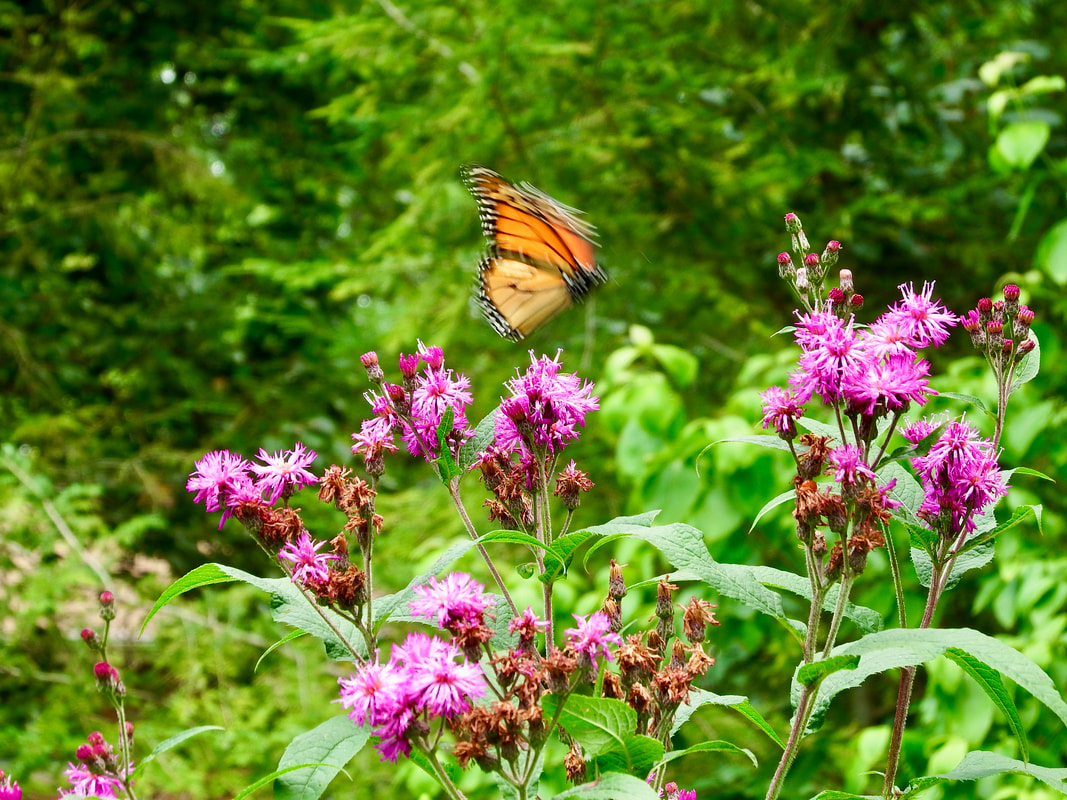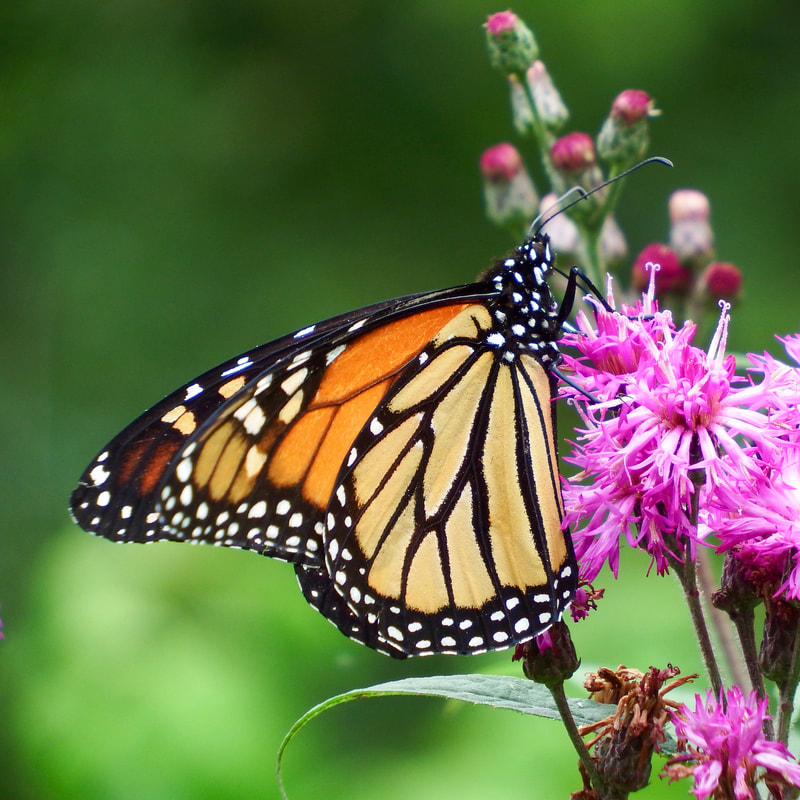|
Many people love butterflies and want them in their garden. But if you ask, "do you want caterpillars chewing on your garden plants?" you may get a different answer. The truth is, butterflies (and all moths -- butterflies are day-flying moths) have different food requirements as they develop through the stages of egg, caterpillar, pupa and adult. Most caterpillars are specialized feeders on fresh green leaves, and feed on only the leaves of a few native plant species they coevolved with. If we want our native butterflies to thrive, such as the beautiful Monarch butterfly pictured, we must include the food plants of their caterpillars in our gardens. In the case of Monarchs, the food plants for the caterpillars are various species of native milkweeds, e.g., common milkweed, Asclepias syriaca, or butterfly milkweed, Asclepias tuberosa. Once the caterpillars grow up and metamorphose into adult butterflies, they become pollinators and drink nectar from many different kinds of flowers, native and non-native. But only native plants provide food for the larval, or caterpillar stage. Plant native plants and start your biodiversity garden today! The photos for this post were taken in our Biodiversity Garden in London, Ontario, in mid-August 2022.
|
AuthorDr. Nina M. Zitani writes about biodiversity and conservation issues Archives
May 2023
Categories |


 RSS Feed
RSS Feed
